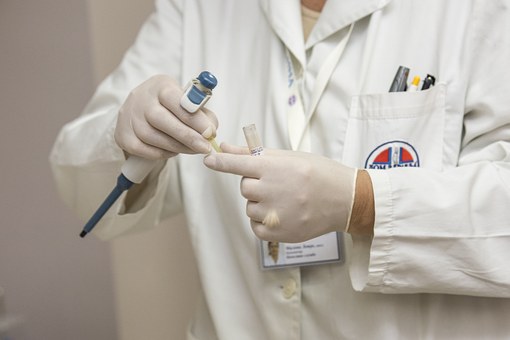The term Kinesiology coined in 1854 by Carl Georgii, the Swedish medical gymnast and kinesiologist, is a literal translation of Greek + English meaning ‘Movement Science’ which was the foundation of medical gymnastics. The Royal Central Institute of Gymnastics (GCI) was founded in Stockholm in 1813 by Pehr Henrik Ling. It was the first physiotherapy school in the world, training hundreds of medical gymnasts who spread the Swedish physical therapy to all continents. In 1887, Sweden was the first country in the world to give a national state license to physiotherapists/physical therapists. Kinesiology was further developed by an American chiropractor, George Goodheart who found that by testing muscle response before and after he made chiropractic corrections he achieved better results for his patients. Eventually he was able to make a connection between various muscles and acupuncture meridians. The International College of Applied Kinesiology (ICAK) was founded in 1975 to provide instruction on Goodheart’s research to other health care professionals. The term now covers not just the original form, but various other healing modalities. The muscle testing aspect of kinesiology is relatively transferable. It is common for it to be applied, expanded upon and incorporated into other therapy forms.
What Is Kinesiology?
Kinesiology is the study of the mechanics of body movements to provide information about the state of health of all body organs and systems. It also employs many other healing therapies to achieve recovery. The field seeks to understand the impact of muscle function on health. Kinesiology draws upon concepts from several sciences, including biomechanics, anatomy, physiology, and neuroscience.
The study of kinesiology seeks to understand the mechanics of human movement and pinpoints the specific muscles involved in specific movements. The field views the human body as a machine that functions in a very purposeful way. Those who work in the field of kinesiology are very interested in the way that muscles move. They’ve broken muscles down into five categories in terms of how they function.
- The prime mover, also called agonist, is the main muscle involved in a movement.
- The assistant mover is a muscle or group of muscles that work with the main muscle in order to support movement.
- The antagonist is a muscle or a group of muscles that engage in the opposite type of movement from the main muscle. The purpose is to stabilize the joint during movement.
- Stabilizer muscles work to hold a moving body part in place.
- Synergy, or coordinated effort: There are two types of synergy. Helping synergy occurs when muscles contract together in one movement. True synergy occurs when a muscle contracts to aid another and stabilize movement.
Main principles of Kinesiology
Kinesiology is a non-invasive holistic energy therapy. It combines the ancient principles of Traditional Chinese Medicine (TCM) with modern muscle monitoring techniques and uses the body itself as a diagnostic tool to explore the health status of the client. It is based upon the premise that any problems arising within the energy system will eventually be reflected in the body. Kinesiology uses muscle-testing techniques to gain an insight into the areas of stress and imbalance within the energy system. Applications of kinesiology include biomechanics and orthopaedics, strength and conditioning, sports psychology, methods of rehabilitation such as physical and occupational therapy and sport and exercise. By testing the resistance of a muscle when a small amount of pressure is applied to it, weaknesses and imbalances in its corresponding meridian could be distinguished. The technique was developed into the system of Kinesiology known as Applied Kinesiology that was used mostly by medical-related practitioners such as dentists and chiropractors.
Branches of Kinesiology
Kinesiology aims to restore balance to the whole person through promoting the self-healing process. There are several modalities of kinesiology with specific health benefits:
Educational kinesiology: is said to help improve sports performance and self-development.
Health kinesiology: has been reported to help boost self-confidence and improve a person’s ability to focus and stay motivated.
Creative kinesiology: works with energy to help people overcome aches, pains, lack of confidence, fatigue, life frustration and lack of fulfilment or purpose.
Wellness kinesiology: works to combine emotional issues with nutritional and structural elements. It is thought that combining these factors helps to bring the mind and body into a state of wellness.
What Kinds of Kinesiology Degrees Are There?
There are four types of kinesiology degrees: associate degree, bachelor’s degree, master’s degree, and doctoral degree. Each degree level covers different topics and leads to different careers with varying levels of responsibility. Students should choose the kinesiology degree that aligns with their career aspirations.
Associate Degree in Kinesiology
An associate degree in kinesiology provides a foundation in the scientific study of movement. Kinesiology associate programs typically prepare students to go on and pursue a bachelor’s degree in kinesiology. Most kinesiology associate degrees take two years of full-time study to complete. Courses commonly offered in these programs include introduction to exercise science, anatomy and physiology, introduction to sports medicine, and nutritional science. Graduates with an associate degree in kinesiology can pursue kinesiology jobs like personal trainer, fitness instructor, and physical therapy aide.
Bachelor’s Degree in Kinesiology
A bachelor’s degree in kinesiology examines disease prevention and health promotion. Students learn to improve human health and wellness using their understanding of movement and exercise. Learners take classes like physiological basis of exercise, health and fitness assessment, health risk appraisal, and applied kinesiology.
Students can often tailor the degree to their interests through specializations in areas such as education, health and fitness leadership, sports medicine, and coaching. Most bachelor’s in kinesiology degrees take four years of full-time study to complete. Graduates can pursue kinesiology jobs like certified personal trainer, chiropractor, and biomechanist.
What’s the Difference Between a BA and a BS in Kinesiology?
Kinesiology students seeking a four-year bachelor’s degree can choose from a bachelor of arts (BA) or a bachelor of science (BS) program. BS in kinesiology programs typically focus more on specialized kinesiology knowledge, while BA in kinesiology programs take a broader approach, including more courses outside of the major in areas like the humanities, arts, and social sciences. Not all schools offer both options.
Students should consider their professionals goals, interests, and personal strengths when choosing between a kinesiology BA or BS.
Master’s Degree in Kinesiology
A master’s degree in kinesiology typically takes two years of full-time study to complete. Graduates of master’s programs can offer clinical expertise in areas like exercise science, kinesiology, and health and fitness. Master’s students often pursue specializations in areas like sports administration, physical education, and community health and wellness.
Common classes include evidence-based practice and research methods, exercise science, exercise and sport-related nutrition, and establishing and managing adaptive sports programs. Some programs require students to complete a thesis or research project to graduate. Potential job titles for graduates include exercise physiologist, athletic director, and strength and conditioning coach.
Doctoral Degree in Kinesiology
Students who pursue a doctoral degree in kinesiology develop highly specialized expertise in a niche area, such as applied exercise physiology, physical education, or motor learning and control. Kinesiology Ph.D. students usually graduate in around four years.
Ph.D. in kinesiology students take classes like advanced lab techniques in exercise physiology, pulmonary exercise physiology, cardiovascular responses to exercise, and sports nutrition. They also complete a research-based dissertation. Potential roles for graduates with a doctoral degree in kinesiology include kinesiology professor, health fitness specialist, kinesiologist, and athletic director.
What Can You Do With a Kinesiology Degree?
Students with a kinesiology degree can pursue many career paths in a variety of industries, including healthcare, education, and sports. The following sections outline potential kinesiology careers for graduates with a kinesiology degree.
Healthcare
A kinesiology degree can lead to healthcare careers like occupational therapist or exercise physiologist. Kinesiology students study healthcare topics like human anatomy and physiology, exercise prescription, and laboratory experience. Common classes include physiology of exercise, measurement and evaluation in kinesiology, and physical activity as therapy.
What Kind of Salary Can I Earn With a Kinesiology Degree?
Salaries for kinesiology graduates vary by job, experience, and education. For example, coaches and scouts make a median annual salary of $34,840, while occupational therapists make $84,950 per year. Below, you’ll find median salaries and projected job growth for some of the top kinesiology jobs.






